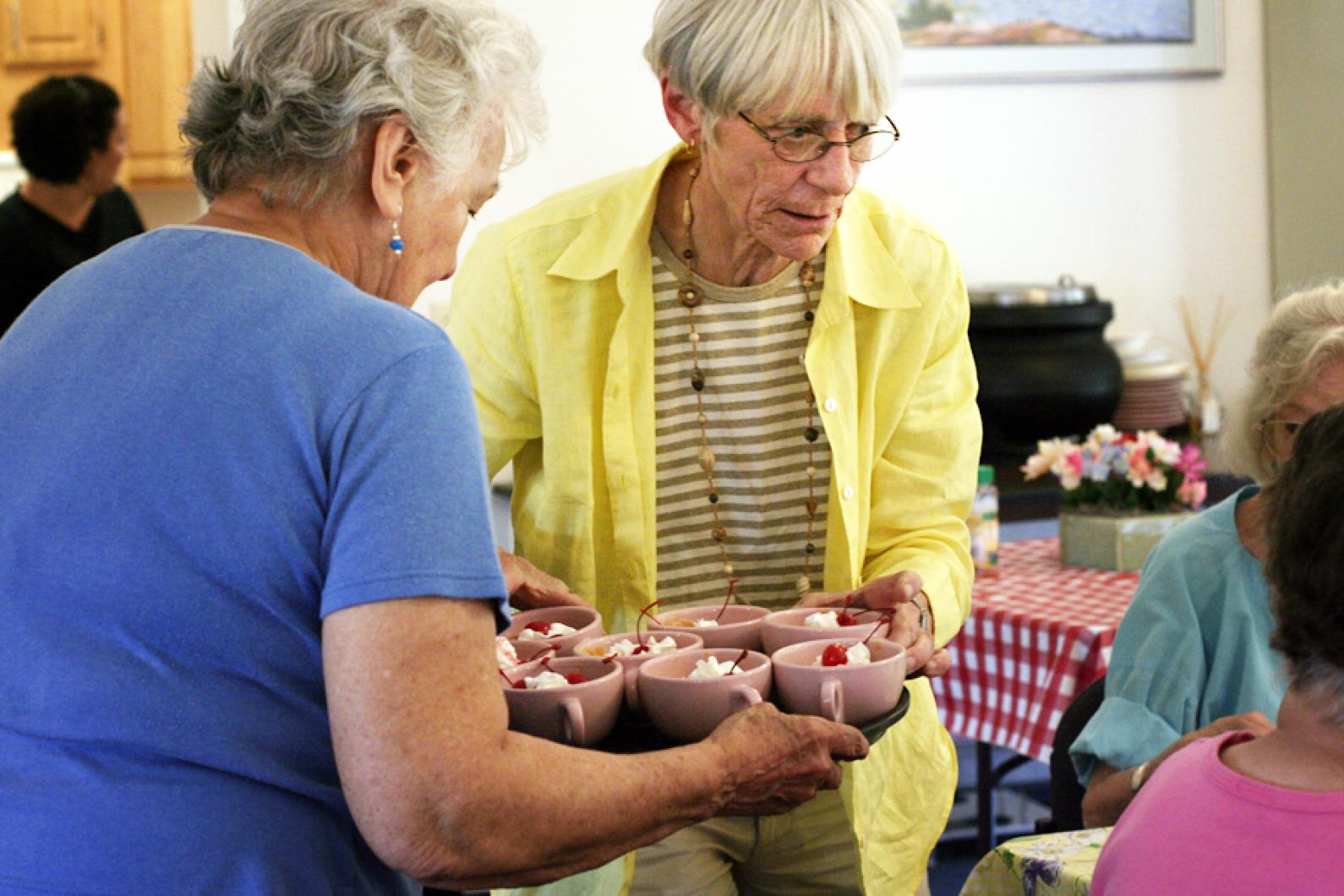For 30 years it has been the Island’s best-kept secret.
And today Island Elderly Housing (IEH) also remains one of the Island’s best success stories, thanks in part to the original founders, Margaret Love, Marguerite Bergstrom and Carol Lashnits, who had a strong and far-sighted vision of what was needed for not only the elder citizens of the Vineyard, but for its disabled population as well.
They understood people wanted to continue living near their friends and family, to continue contributing to their community, just as they had done for all the years past. For 30 years the subsequent boards of IEH quietly built 12 projects containing 18 buildings that provide 165 housing units. Each independent living space is approximately 650 square feet.
A multigenerational and diverse group, many of the people who live in Island Elderly Housing today are the same people who have shaped the Island through the years.
Thanks to funding from the federal Housing and Urban Development Department (HUD), Island Elderly Housing has never had to fundraise for bricks and mortar — but times are changing.
“HUD is changing its funding for building new projects,” said IEH executive director Ann Wallace in a recent interview. “Our last one [building project] was completed in 2006 — this change in funding is very important to watch as there is always a need for more housing assistance,” she said. Currently there are some 50 people on the waiting list for elderly housing on the Island, and about 70 on the waiting list for housing the disabled.
Many elderly people on the Island face a potentially difficult situation as they become less able to care for a large house or have diminished financial circumstances. Where do these people go? They are not ill — they can take care of themselves — plus they are social and active in the community. Many choose to move into elderly housing, an option that allows them to stay on the Island near family and friends.
Currently there are four different sites: Hillside Village and the Margaret C. Love House in Vineyard Haven, and Woodside Village and Aidylberg Village in Oak Bluffs.
Rent is based on individual annual income (which must be under $28,650). Thirty per cent of a person’s annual income goes toward rent, which includes heat and electricity, snow removal and building maintenance. Residents must pay for their own landline telephone, in case of emergencies, and cable service.
Two programs that are not funded by HUD but rely on continued donations for support are also the critical human component of life at IEH: a once-weekly community meal program and the Blueberry Van service that operates four times a week.
Every week residents of the two Oak Bluffs and two Vineyard Haven residencies come together at the largest community room, in Woodside Village, for an evening meal, camaraderie and sharing.
The most recent evening was on June 25; at that meal Ms. Wallace collected some feedback from the residents for this story.
“I met a lot of new friends, we have conversations and I learn new things. You come out from your apartment and mix with others. You hear the sadness and the joyful things. It is about participation. The dinners make us feel together,” said Rosemary Brown, a two-year resident. “These dinners are lifesavers. I don’t cook, it’s a life with friends,” said Hank Sjostrom, a three-year resident. “It is nice to be with friends and have a good meal and not have to cook,” agreed Lucy Costa, a 16-year resident. “You don’t have to eat alone,” said Suzanne Walker, a 16-year resident. “There is great community spirit and good food. We all watch out for each other,” said B. Jean Silva, a six-year resident.
This past winter Martha’s Vineyard Public Charter School students prepared, delivered and served several meals for the residents. Ms. Wallace said it was truly a bright spot in the gray winter months, where they enjoyed entertainment, sang and even danced.
In the spring Martha’s Vineyard Regional High School students come to help tend the gardens. Many of the people who live at Woodside Village help out too and enjoy watching their mascot cat Buddy chasing butterflies in the garden.
The interaction between teens and seniors often works to the benefit of both. One parent asked if her daughter could visit residents to have the connection with an older generation since she did not have grandparents.
The Blueberry Van takes residents to appointments, grocery shopping and the food bank, or perhaps for a trip into town where they can stroll the main and side streets, peruse shops and restaurants and meet friends. Each elderly housing site also has access to Vineyard Transit Authority buses. The van driven by Kevin McFarland will appear in the Fourth of July parade.
Marguerite Bergstrom died in 2003, about three years after Margaret Love. Carol Lashnits retired a few years ago. The current board consists of John Early, president, Bill Stafursky, Marcia Mulford Cini, Dianne Wilson, Marie Allen, Simone DeSorcy, Rick Presbrey, Al Hopp and Eleanore Tompkins.
Community meals and the Blueberry Van need contributions to help keep them going. Meanwhile, Ms. Wallace hopes that HUD will continue to provide funding for bricks and mortar for this housing program that is so vital to the needs of the Island community. Currently the Vineyard has no seniors out in the cold, and many people are working to make sure it stays that way.
Tax-deductible contributions may be sent to Island Elderly Housing Inc., 60B Village Road, Vineyard Haven, MA 02568, or visit their Web site at iehmv.org.







Comments
Comment policy »